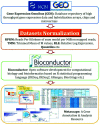Computational methods directed towards drug repurposing for COVID-19: advantages and limitations
- PMID: 35492747
- PMCID: PMC9043418
- DOI: 10.1039/d1ra05320e
Computational methods directed towards drug repurposing for COVID-19: advantages and limitations
Abstract
Novel coronavirus disease 2019 (COVID-19) has significantly altered the socio-economic status of countries. Although vaccines are now available against the severe acute respiratory syndrome coronavirus 2 (SARS-CoV-2), a causative agent for COVID-19, it continues to transmit and newer variants of concern have been consistently emerging world-wide. Computational strategies involving drug repurposing offer a viable opportunity to choose a medication from a rundown of affirmed drugs against distinct diseases including COVID-19. While pandemics impede the healthcare systems, drug repurposing or repositioning represents a hopeful approach in which existing drugs can be remodeled and employed to treat newer diseases. In this review, we summarize the diverse computational approaches attempted for developing drugs through drug repurposing or repositioning against COVID-19 and discuss their advantages and limitations. To this end, we have outlined studies that utilized computational techniques such as molecular docking, molecular dynamic simulation, disease-disease association, drug-drug interaction, integrated biological network, artificial intelligence, machine learning and network medicine to accelerate creation of smart and safe drugs against COVID-19.
This journal is © The Royal Society of Chemistry.
Conflict of interest statement
There are no conflicts to declare.
Figures




Similar articles
-
Scope of repurposed drugs against the potential targets of the latest variants of SARS-CoV-2.Struct Chem. 2022;33(5):1585-1608. doi: 10.1007/s11224-022-02020-z. Epub 2022 Aug 3. Struct Chem. 2022. PMID: 35938064 Free PMC article. Review.
-
Repurposing therapeutics for COVID-19: Rapid prediction of commercially available drugs through machine learning and docking.PLoS One. 2020 Nov 12;15(11):e0241543. doi: 10.1371/journal.pone.0241543. eCollection 2020. PLoS One. 2020. PMID: 33180803 Free PMC article.
-
Identification of potential pan-coronavirus therapies using a computational drug repurposing platform.Methods. 2022 Jul;203:214-225. doi: 10.1016/j.ymeth.2021.11.002. Epub 2021 Nov 9. Methods. 2022. PMID: 34767922 Free PMC article.
-
Machine Learning Applications in Drug Repurposing.Interdiscip Sci. 2022 Mar;14(1):15-21. doi: 10.1007/s12539-021-00487-8. Epub 2022 Jan 23. Interdiscip Sci. 2022. PMID: 35066811 Free PMC article. Review.
-
Computational drug discovery and repurposing for the treatment of COVID-19: A systematic review.Bioorg Chem. 2021 Jan;106:104490. doi: 10.1016/j.bioorg.2020.104490. Epub 2020 Nov 19. Bioorg Chem. 2021. PMID: 33261845 Free PMC article.
Cited by
-
Pathway2Targets: an open-source pathway-based approach to repurpose therapeutic drugs and prioritize human targets.PeerJ. 2023 Sep 29;11:e16088. doi: 10.7717/peerj.16088. eCollection 2023. PeerJ. 2023. PMID: 37790614 Free PMC article.
-
Interaction of Camptothecin Anticancer Drugs with Ribosomal Proteins L15 and L11: A Molecular Docking Study.Molecules. 2023 Feb 15;28(4):1828. doi: 10.3390/molecules28041828. Molecules. 2023. PMID: 36838813 Free PMC article.
-
Hybrid Approach to Identifying Druglikeness Leading Compounds against COVID-19 3CL Protease.Pharmaceuticals (Basel). 2022 Oct 28;15(11):1333. doi: 10.3390/ph15111333. Pharmaceuticals (Basel). 2022. PMID: 36355505 Free PMC article.
-
Virtual Screening of Artemisia annua Phytochemicals as Potential Inhibitors of SARS-CoV-2 Main Protease Enzyme.Molecules. 2022 Nov 21;27(22):8103. doi: 10.3390/molecules27228103. Molecules. 2022. PMID: 36432204 Free PMC article.
-
In silico screening and experimental validation identify riboflavin as an RNA-targeted antiviral against SARS-CoV-2.Sci Rep. 2025 Aug 22;15(1):30935. doi: 10.1038/s41598-025-16949-8. Sci Rep. 2025. PMID: 40846756 Free PMC article.
References
-
- Placchi M. and Phillips R. J., The Benefits and Pitfalls of Repurposing Drugs, https://oliver-dev.s3.amazonaws.com/2018/11/07/21/59/08/240/Benefits%20a..., accessed Febuary 26, 2021
-
- Riva L. Yuan S. Yin X. Martin-Sancho L. Matsunaga N. Pache L. Burgstaller-Muehlbacher S. De Jesus P. D. Teriete P. Hull M. V. Chang M. W. Chan J. F.-W. Cao J. Poon V. K.-M. Herbert K. M. Cheng K. Nguyen T.-T. H. Rubanov A. Pu Y. Nguyen C. Choi A. Rathnasinghe R. Schotsaert M. Miorin L. Dejosez M. Zwaka T. P. Sit K.-Y. Martinez-Sobrido L. Liu W.-C. White K. M. Chapman M. E. Lendy E. K. Glynne R. J. Albrecht R. Ruppin E. Mesecar A. D. Johnson J. R. Benner C. Sun R. Schultz P. G. Su A. I. García-Sastre A. Chatterjee A. K. Yuen K.-Y. Chanda S. K. Nature. 2020;586:113. doi: 10.1038/s41586-020-2577-1. - DOI - PMC - PubMed
-
- Naylor S. and Schonfeld J. M., Therapeutic Drug Repurposing, Repositioning and Rescue Part I: Overview, https://www.ddw-online.com/therapeutic-drug-repurposing-repositioning-an..., accessed March15, 2021
Publication types
LinkOut - more resources
Full Text Sources
Miscellaneous

